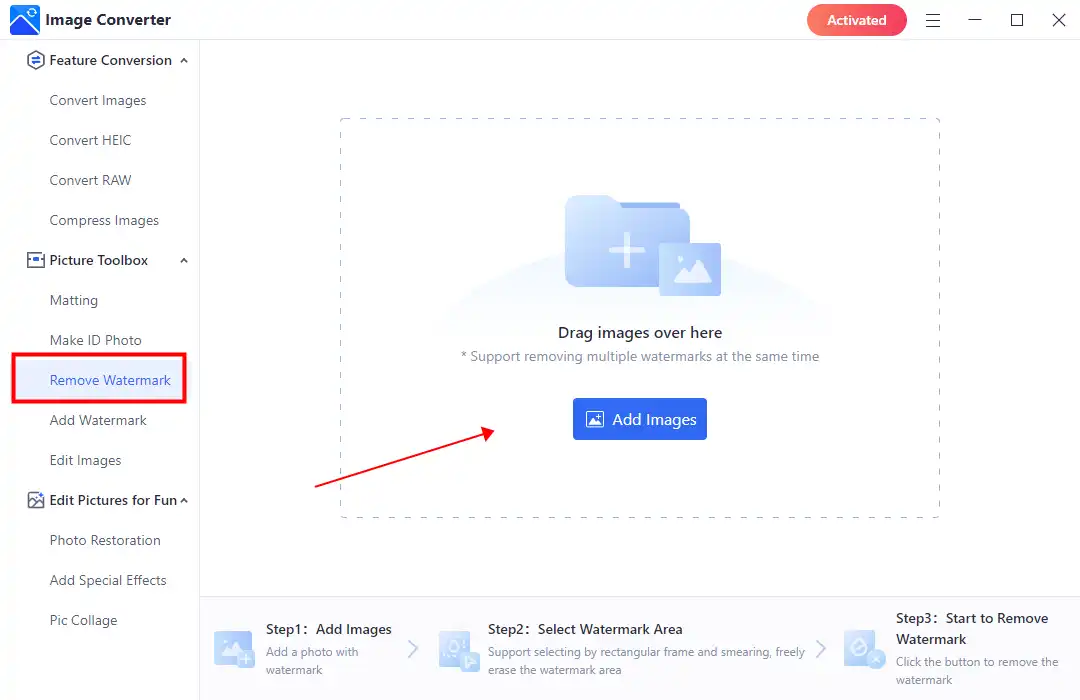Have you ever come across a stunning Shutterstock image but found it marked with a big, obvious watermark? Maybe you’re wondering if there’s a way to use that image without the watermark or just curious about the process. While watermarks are there to protect photographers’ rights and prevent unauthorized use, sometimes people look for ways to remove them—whether for personal projects, educational purposes, or just out of curiosity. In this post, we’ll explore some effective tips and tricks for removing watermarks from Shutterstock images, along with understanding why people seek to do this in the first place.
Understanding the Reasons for Watermark Removal

Before diving into how to remove watermarks, it’s helpful to understand why people might want to do it. Watermarks serve as a clear sign that an image is protected and not free to use. They help photographers and stock photo agencies prevent unauthorized sharing or commercial use without licensing. However, here are some common reasons why someone might consider watermark removal:
- Personal Use: Someone may want to use an image for personal projects, like a blog or presentation, without purchasing a license.
- Educational Purposes: Teachers or students might want to study or showcase an image without paying for it.
- Creative Edits: Designers sometimes want to see how an image looks without the watermark before deciding to buy or use it.
- Misunderstanding or Lack of Awareness: Some might not realize the legal implications and see watermark removal as a simple solution.
It’s important to note that removing watermarks without permission is generally considered illegal and unethical, as it infringes on copyright laws and the rights of creators. The best approach is to acquire images legally through licensing or use royalty-free alternatives. However, understanding why watermarks are there helps clarify the importance of respecting intellectual property and choosing the right avenues for image use.
3. Legal Considerations and Copyright Issues

Before diving into ways to remove watermarks from Shutterstock images, it’s really important to chat about the legal side of things. Watermarks are there for a reason—they protect the rights of photographers and content creators, making sure they get credit and compensation for their work. So, removing a watermark without permission isn’t just a gray area; it can be outright illegal and could lead to serious consequences.
Using images without proper licensing or permission can result in copyright infringement, which might land you in legal trouble, including fines or lawsuits. Even if you think the watermark is easy to remove, doing so without the rights to use the image is considered copyright violation. That’s why it’s always best to respect the creator’s rights and follow proper channels.
If you need an image from Shutterstock, the best way is to purchase a license. This way, you get legal access to use the image for your project, and you’re supporting the artists who create these visuals. Sometimes, people get tempted to remove watermarks because they want free images, but it’s a risky move that can cost a lot more in the long run.
In summary, keep these points in mind:
- Watermarks are there to protect intellectual property.
- Removing watermarks without permission is often illegal.
- Always buy the appropriate license or obtain permission before using an image.
- Respect the rights of photographers and content creators to avoid legal issues.
Ultimately, using images responsibly not only keeps you on the right side of the law but also supports the talented creators who make the images you love. If budget is a concern, consider exploring free or royalty-free image sites, or look for images that are explicitly labeled for free use.
4. Methods and Tools for Removing Shutterstock Watermarks

If you’re still curious about how people sometimes remove watermarks from Shutterstock images—and remember, only do this when you have the legal right to do so—there are a few common methods and tools that can help. Keep in mind, these techniques work best when you have permission or own the rights to the image.
One popular approach involves using photo editing software that allows you to carefully erase or blend out the watermark. Here are some of the most commonly used tools:
| Tool | Features | Ease of Use |
|---|---|---|
| Adobe Photoshop |
|
Intermediate to Advanced |
| GIMP (GNU Image Manipulation Program) |
|
Intermediate |
| Inpaint |
|
Beginner to Intermediate |
Here’s a quick rundown on how these tools typically work:
- Select the watermark using the selection tools provided.
- Use the clone or healing tools to paint over the watermark, sampling nearby pixels to blend the area seamlessly.
- Apply content-aware or automatic fill features when available, which analyze the surrounding pixels to fill in the area convincingly.
- Refine the results as needed, zooming in for detail work to ensure the edit looks natural.
While these methods can be effective, they require patience and a bit of skill, especially if you want the results to look professional. For best results, practice with different images and tools to get a feel for what works best.
Remember, always ensure you have the right to modify the image before attempting any of these techniques. When used responsibly, these tools can help you make the most out of images you own or have permission to edit.
5. Step-by-Step Guide to Using Watermark Removal Software
Removing watermarks from Shutterstock images might sound tricky, but with the right tools and a little patience, it can be straightforward. Here’s a simple step-by-step guide to help you navigate the process smoothly.
Step 1: Choose a Reliable Watermark Removal Tool
First things first, pick a trustworthy software or online service. Some popular options include Inpaint, HitPaw Watermark Remover, and Adobe Photoshop. Make sure the tool you select is compatible with your device and suits your level of expertise.
Step 2: Upload the Image
Once you’ve selected your tool, upload the Shutterstock image you want to edit. Usually, there’s a clear button labeled “Upload” or “Open”. Keep in mind that some tools may have size restrictions, so check those beforehand.
Step 3: Highlight the Watermark
Next, use the selection tool provided by the software to mark the watermark area. Most tools allow you to brush over the watermark with a simple click or drag motion. Take your time to be precise—this ensures better removal results.
Step 4: Remove the Watermark
After highlighting the watermark, click on the “Remove” or “Erase” button. The software will process the image and attempt to fill in the marked area seamlessly. Some tools might offer preview options, so you can see the before-and-after effects.
Step 5: Fine-Tune the Results
Often, the initial removal isn’t perfect. Use the editing features to smooth out any inconsistencies or artifacts. Adjusting the background or blending edges can make the edit look more natural.
Step 6: Save Your Image
Once satisfied, save the edited image in your preferred format. Remember to choose a high-resolution output if you plan to use the image for professional purposes. Also, keep the original watermark-laden version safe, just in case you need it later.
Extra Tips:
- Always work on a copy of the original image to prevent data loss.
- Experiment with different tools if one doesn’t give perfect results.
- Be patient—sometimes, multiple passes are necessary for a clean removal.
Using watermark removal software isn’t rocket science, but a little practice goes a long way. With these steps, you’ll be removing watermarks with confidence and efficiency!
6. Best Practices for Using Removed Images Legally and Ethically
Now that you’ve learned how to remove watermarks, it’s crucial to talk about the responsible way to use these images. Just because you can remove watermarks doesn’t mean you should use the images without considering copyright laws and ethical standards. Let’s explore some best practices to keep your usage legal and respectful.
Understand Copyright Laws and Licensing
First and foremost, always respect the rights of content creators. Shutterstock images are protected by copyright, and removing watermarks doesn’t automatically give you the right to use them freely. If you’ve purchased a license or have explicit permission, you’re good to go. If not, using the image might infringe on copyright laws, which can lead to legal issues.
Use Images Only for Permitted Purposes
Even with a license, be clear about how you plan to use the image. Commercial use, editorial use, or personal projects each have different restrictions. Always double-check your licensing agreement to ensure your intended use is covered.
Credit the Creator When Required
Some licenses may require attribution. Even if it’s not mandatory, giving credit to the original photographer or Shutterstock can be a good ethical practice, especially if you’re sharing images publicly or online.
Enhance and Modify Responsibly
If you’re editing the image after removing the watermark, do so in a way that respects the original work. Avoid misrepresenting the image or using it in contexts that could harm the creator’s reputation.
Maintain Transparency
If you’re using the image in a professional setting, be transparent about your source and licensing. This honesty not only keeps you compliant but also builds trust with your audience.
Keep Documentation
Always store proof of licensing or permissions, especially if you’ve purchased the rights. This can be useful if questions about your image usage ever arise.
Summary Table: Do’s and Don’ts of Using Watermark-Removed Images
| Do’s | Don’ts |
|---|---|
| Use images within your licensing rights | Use images without proper permission |
| Credit the creator if required | Claim sole ownership of the image |
| Edit images responsibly, respecting original work | Misrepresent or falsely advertise the image |
| Keep proof of licensing or permissions | Share or distribute unlicensed images publicly |
In essence, removing watermarks might give you the ability to edit images, but it doesn’t grant you free rein to use them however you like. Always play by the rules, respect creators, and ensure your use is both legal and ethical. Doing so helps support artists and maintains integrity in your work.
7. Alternative Solutions for Accessing Shutterstock Images
If you’re finding the watermark removal process a bit tricky or if you’re worried about the legal and ethical aspects, don’t worry—there are plenty of legitimate ways to access high-quality Shutterstock images without the watermark hassle.
First and foremost, consider purchasing a license. Shutterstock offers various subscription plans and on-demand options that give you legal access to their images. When you buy a license, you can download the images in their original, watermark-free quality. This not only saves you time but also ensures you’re respecting the rights of content creators.
Secondly, explore Shutterstock’s free trial options. Sometimes, Shutterstock offers free trials that allow you to download a limited number of images without watermarks. It’s a great way to get high-quality visuals for your project legally and without extra cost, especially if you only need a few images.
Third, look into alternative stock image sites. There are many platforms like Unsplash, Pexels, and Pixabay that offer high-resolution images free of charge and without watermarks. While their image collections might differ from Shutterstock, you can often find stunning visuals that fit your needs perfectly.
Lastly, consider reaching out to photographers directly. If you find an image on Shutterstock that you love, sometimes the photographer’s contact info is available, or they might be willing to license the image directly for a more flexible or affordable rate. This approach also supports the artists behind the images.
In summary, while removing watermarks might seem like a quick fix, exploring these legitimate options saves you from potential legal issues and supports fair use. Plus, you’ll get high-quality, watermark-free images that are ready for your project—no extra steps required!
8. Conclusion and Final Tips for Successful Watermark Removal
So, you’ve learned about various methods to remove watermarks from Shutterstock images, but the key takeaway is to always consider the ethical and legal aspects before proceeding. Watermarks are there for a reason—they protect the rights of creators and ensure they get credit for their work.
However, if you’re working with images that you have permission to edit or if you’re exploring creative ways to modify images for personal projects, here are some final tips to help you succeed:
- Start with a high-resolution image. The better the quality of the original, the easier it is to work with when removing watermarks or making edits.
- Use the right tools. Photo editing software like Adobe Photoshop, GIMP, or even online editors like Pixlr can make the process smoother. Familiarize yourself with selection tools, clone stamps, and healing brushes for better results.
- Be patient and precise. Rushing can lead to obvious edits or artifacts. Take your time to carefully select and remove the watermark, blending the area seamlessly with the surrounding pixels.
- Save a copy of the original. Always keep an untouched version of the image in case you need to revisit or redo the editing process.
- Respect copyright laws. Remember, removing watermarks without permission is illegal and unethical. When in doubt, opt for legitimate sources or proper licensing.
Finally, always check the final image thoroughly. Make sure there are no leftover artifacts or inconsistencies that could give away the editing. A polished, watermark-free image should look natural and professional, ready to be used for your project.
By following these tips, you’ll be better equipped to handle watermark removal responsibly and effectively. Whether you’re enhancing your own images or using licensed content, staying respectful of creators’ rights is always the best approach. Happy editing!


